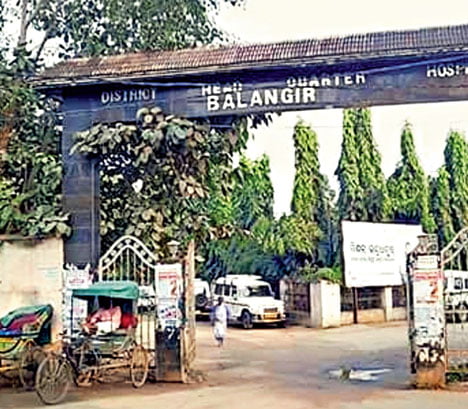Best Practices & High Occupancy: 3 Hospitals Of Odisha Find Mention In NITI Aayog Report

Bhubaneswar: Balangir district hospital in Odisha has found mention in NITI Aayog’s ‘Best Practices of Well Performing Hospitals’ in the country.
The study ‘ Best Practices in the Performance of District Hospitals’ released on Thursday said that it provides various specialized and non-specialized clinical OPD services along with 24×7 causality and emergency services. The hospital is diligently providing the 14 identified core healthcare services. The IPD services are also very well manned with trained staff nurses present round the clock along with the patients. The ancillary services of the hospital are also very good like the hospital provides mechanized housekeeping services, smart security services with CCTV cameras, mechanized laundry services, help desk services (May I Help You), free diet services, proper waste management services, central registration services, free drug services, free investigation services, free high-end diagnostic services like CT scan and dialysis.
A total of 32 hospitals in the state were assessed and 25 per cent of them (8 hospitals) met the Indian Public Health Standards (IPHS) norms for positioned doctors while it was 59.38 per cent for paramedical staff and only 3.13 per cent for staff nurses.
BEDS
Odisha is also among the 21 states & UTs in the country where the average number of beds per lakh population in a district hospital is higher than the recommended figure (22 beds per lakh of the population).
While Puducherry has the highest of 222 beds, Bihar has the lowest at six, the study conducted by the government’s top think tank revealed.
Odisha has the required 22 beds.
Tamil Nadu had the highest proportion (16.8%; 17/101) of hospitals with all functional specialities, followed by Karnataka (13.9 per cent; 14/101), West Bengal (10.9; 11/101 per cent), and Kerala (9.9 per cent; 10/101). Odisha occupies the eighth position at 5 per cent.
OCCUPANCY RATE
The study further said that 182 of 707 hospitals had a bed occupancy rate of 90 per cent or higher. While bed occupancy in district hospitals in the country is 57.17 per cent, it is 65.68 per cent in Odisha, the 12th highest in the country.
Uttar Pradesh (14.8 per cent) had the highest proportion of hospitals with bed occupancy rate greater than or equal to 90 per cent, followed by Madhya Pradesh (10.9 per cent), Maharashtra (8.2 per cent), Odisha (8.2 per cent), West Bengal (7.1 per cent), and Andhra Pradesh (5.5 per cent).
Two small and one mid-sized hospital in Odisha have high bed occupancy rates in India. In Balangir district hospital, the patient footfall has been increasing every day and has touched approximately 9,000 to 10,000 inpatient bed days per month. Patients cannot be cured of disease only with medicine; there is also a need for appropriate ambience/ improved facilities. The staff are pushed to follow respectful patient care. District headquarters hospital, Paralakhemundi, utilizes the Ishikawa (Fishbone Diagram) technique for brainstorming and mind mapping to discover the cause-and-effect relationship of any identified underlying problem to increase patient satisfaction during their stay in the hospital. The focus shifted towards cleanliness of wards, installation of air conditions, clean beds, adequate lighting, clean toilets, providing mosquito nets, blankets, cooked balanced diet, Aahar scheme27 in hospital premises for the attendants accompanying the patients.
In District headquarters hospital, Deogarh, too the key measures on housekeeping and cleaning upkeep, staff behaviour, laundry service, availability of staff, counselling of patients, and the availability of patient-centric services free of cost have played a key role in ensuring a high bed occupancy rate.

Comments are closed.